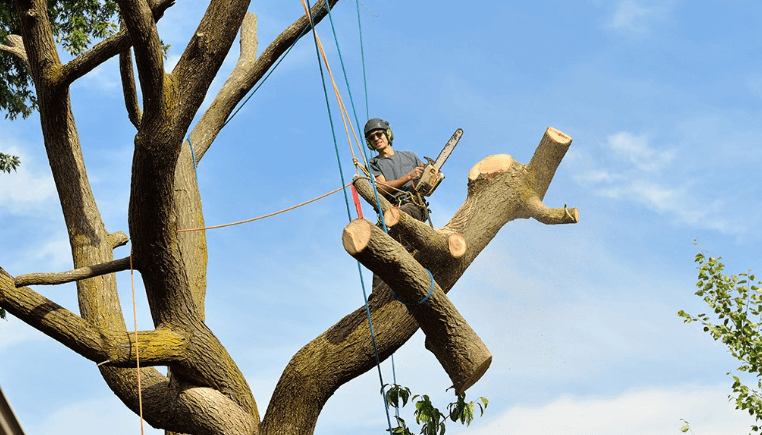The Best Time to Trim and Prune Trees: A Comprehensive Guide for Tree Care

Proper tree trimming is vital for the aesthetics and health of your landscape. But how do you determine the best time to trim trees? Timing is crucial for tree care, impacting their growth, resilience, and overall well-being. This article will explore expert advice and recommendations to help you understand the optimal timing for tree trimming. By following these guidelines, you can ensure your trees get the care they need to thrive.
Pruning vs. Trimming
Tree pruning and tree trimming are two common services from a tree care company that involve removing branches. However, they serve different purposes.
Tree Trimming
Tree trimming is primarily for aesthetics, maintaining the tree’s size and shape. It involves removing branches that may be encroaching on power lines or shaping the tree into desired forms. When done correctly, trimming helps the remaining foliage grow thicker and faster. This procedure is typically done every few years as the tree loses shape. Costs range from $75 to $1,800 for most homeowners.
Tree Pruning
Tree pruning focuses on tree health by removing diseased, dead, or overly thick branches that hinder growth and block light. This method promotes stronger, healthier growth and shapes the tree. Pruning is usually done every one to five years, with additional removal of dead or diseased foliage as needed. Depending on the tree’s size, costs range from $175 to $2,650.
Why Timing Matters for Tree Trimming
Trimming trees at the right time is vital for several reasons. First, trees have different growth patterns and requirements depending on their species. Cutting them outside their appropriate window can stress the trees, make them more susceptible to diseases, and reduce their overall vitality.
Additionally, improper pruning techniques can lead to irreversible damage, compromising the longevity and aesthetics of the trees. Understanding the best time to trim trees can optimize the benefits while minimizing potential risks.
Expert Recommendations
Cut Trees in Late Winter to Early Spring
The best time to trim most deciduous trees is during late winter or early spring before the new growth begins. This period of dormancy allows for better visibility of the tree’s structure and encourages vigorous growth in the upcoming months. However, it is essential to avoid trimming trees during extreme cold or freezing temperatures. Pruning during these conditions can be detrimental to the trees’ health.
Consider Tree Species and Regional Climate
The best time to trim trees may vary depending on the specific tree species and regional climate. For example, oak trees are best pruned during late fall or winter to mitigate the spread of oak wilt disease.
On the other hand, cedar and cypress trees should be trimmed in early spring to prevent the transmission of pests, such as the cedar bark beetle. Understanding the unique requirements of your tree species and considering your local climate is crucial when determining the ideal time for pruning.
Remove Branches After Flowering
Prune flowering trees immediately after they bloom. This timing allows the trees to continue their growth and develop flower buds for the next season. By waiting until after blooming, you can enjoy the beauty of the flowers while still giving the trees ample time to recover and prepare for future growth.
Sealing or Painting After Trimming
Sealing or painting wounds after pruning cuts is generally discouraged for routine trimming as it can disrupt the tree’s natural healing process. Allowing the tree to form wound wood and seal cuts naturally promotes better tree vigor and faster recovery.
However, painting tree trimming wounds is a necessary protective measure in cases with a risk of diseases like oak wilt.
Read also What to Remember When Starting an Online Business
The Importance of Consulting Tree Care Professionals
Determining the best time to trim trees can be overwhelming, considering the various factors involved. Tree care is a specialized field; it is prudent to consult a professional for guidance tailored to your specific circumstances. A tree care expert will possess the expertise and experience to evaluate your trees’ health, identify their species, and recommend the most appropriate timing for trimming.
Get in Touch With a Tree Care Company
If you are trying to decide when to trim your trees or need assistance with tree care, contact your preferred tree care business. Their certified arborists will assess your trees, provide personalized advice, and perform excellent tree-trimming services.
With help from a tree care professional, you can enjoy the benefits of well-timed tree trimming for the health and beauty of your landscape.








